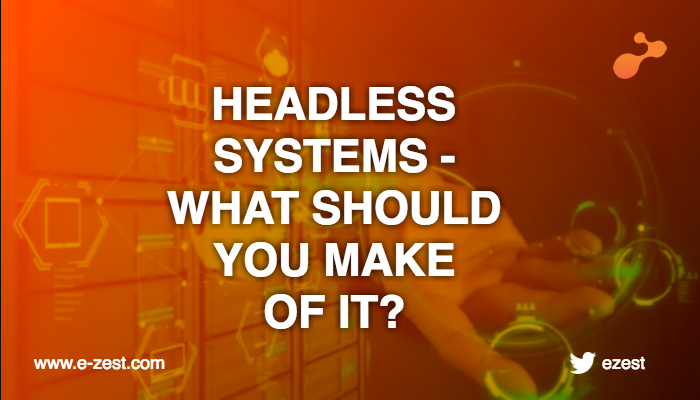“Headless Magento” is where front end and back end of a commerce platform is de-coupled that stand independently of one another, separating content presentation layer and business logic/functional layer.
Why Headless is growing in popularity?
There are two major factors. First, when e-commerce first entered the market, the majority of traffic to websites came from desktop. As a result, the solutions that sprung up at the time were full-stack which was all-inclusive with the website front end and backend coupled.
But as technology evolved, the path to purchase expanded to include not only mobile traffic, but a complex matrix of buyer touch points that demands flexibility that is difficult for full-stack solutions to execute because the frontend and backend of the system are coupled.
Secondly, every market player now wants to expand into commerce. Because of the amount of content that already exists, from an implementation standpoint, it’s much easier to build a commerce engine and connect it to the existing content management solution, rather than creating a completely new website and having to migrate their old content into it.
What are the benefits of headless?
Flexibility
Because the front end and back end of a headless system are decoupled, it is possible to make updates to the content layer without disrupting the business. For example, your marketing team could launch a new promotional campaign without having to rely on developers and a full system reconfiguration.
Personalization
Because headless systems are de-coupled, you can experiment without fear of slowing your website. For example, you could run continuous backend experiments for achieving personalization without disrupting shoppers who are using the front-end search function.
Speed
A decoupled architecture allows you to make rapid changes without disturbing the back end, and vice versa. It also means new functionalities and integrations can be applied with much less time, because of the openness of the architecture. For example, you can make a quick update for without having to reboot your entire system.
Customization
Because a headless architecture is decoupled integrations, you can work closely with your technology team to identify which integrations make the most sense for your business that will actually impact your bottom line.
In summary, apart from saving time and cost, going headless by decoupling a website’s back and front end allows for quicker integrations, greater experimentation, personalization and speed. In the next blog, we will explore how to measure performance of a commerce platform.


